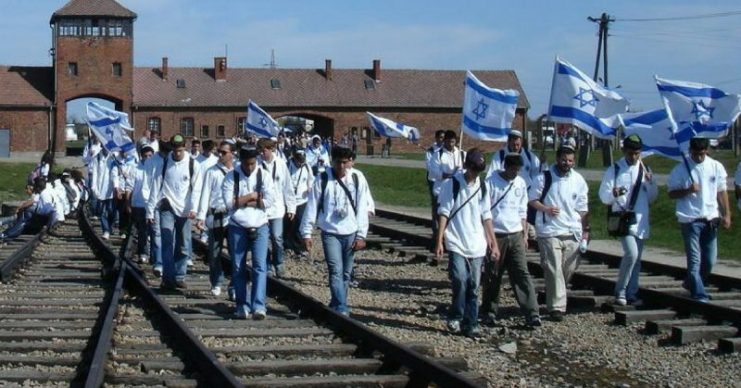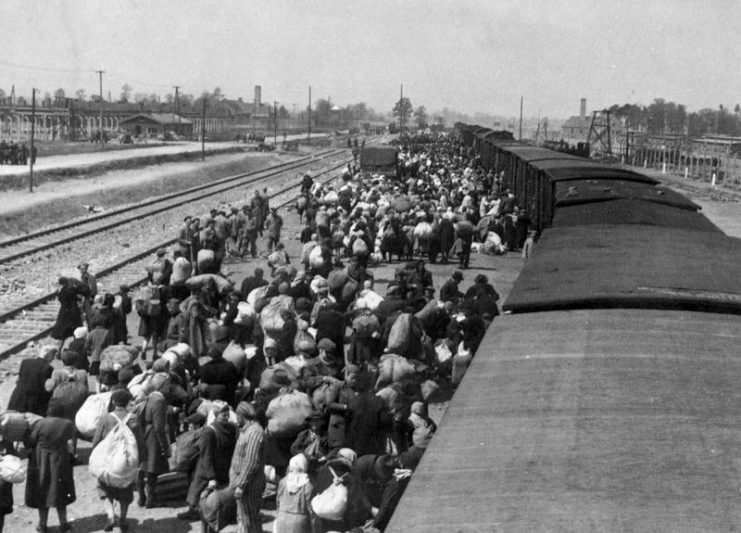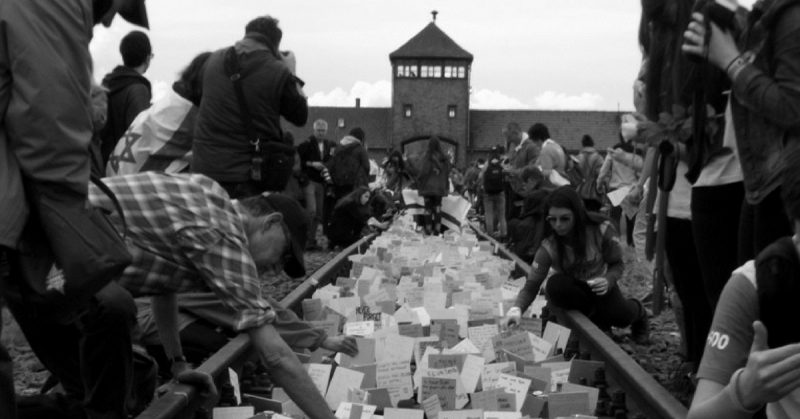On April 12, 2018, on the day of Yom HaShoah, Israel’s Holocaust Remembrance Day, the thirtieth annual March of the Living was held in Oświęcim, in southern Poland. Thousands of people marched almost two miles from the site of Auschwitz, one of the most infamous of the Nazi concentration camps built in Poland, to the equally notorious Birkenau. This year the march was led by President Reuven Rivlin of Israel and Poland’s President Andrzej Duda after visiting the Death Wall at Auschwitz. Most of the participants were Jews, Poles or Israelis who either carried or draped themselves with the flag of Israel. Young people marched alongside elderly survivors who displayed the numbered tattoos given to them by the Nazis when they were captured.
During his speech, President Rivland honored the over six million Jews that were exterminated by the Nazis during World War II. “This country, Poland, was the cradle of Jewish history but it also became the largest cemetery in the world for Jews,” he remarked. Before World War II, Jews made up ten percent of the population in Poland with only about three hundred thousand surviving the war. The March of the Living is held to not only honor victims of the Holocaust but serves as an educational tool to make sure the years of 1940 to 1945 won’t be forgotten. People from all over the world attend or send delegations to Poland to take part in the March as anyone who rejects intolerance, prejudice, and hatred are welcome.

According to the March of the Living website, “The universal goal of the International March of the Living is to help inspire our participants to fight indifference, racism, and injustice by witnessing the atrocities of the Holocaust. Our hope is that the program will help strengthen Jewish identity, connections to Israel and build a community of future Jewish leaders.” Irving Roth, the Director of the Holocaust Resource Center at the Temple Judea of Manhasset, New York, has joined the March every year since 1998. As a fourteen-year-old boy, Roth arrived at Auschwitz in a cattle car loaded with Jews in May of 1944. After the March he expressed concern that it won’t be long before all of the survivors of the death camps will be gone with no one left to educate the young with personal stories. It was then that he realized it was up to the youth of today to carry the memories of the survivors. “…I was struck by the idea that these teenagers that walked in the ashes of Auschwitz had become surrogate survivors. They have been listening to survivors, they know their stories, they saw the gas chambers and crematoria of Majdanek, they marched with the survivors in silence and felt their pain. They absorbed the souls of those that were murdered and those that survived. They will tell their children, grandchildren, and great-grandchildren of Auschwitz, Treblinka, Majdanek, Sobibor, Chelmno, and Belzec. They will retell the stories of Jewish life that once was in Europe.”

Not all Jews agree that the annual March of the Living is doing a proper job in educating people about the Holocaust. Ariana Melamed, a contributing writer for the Israeli website Haaretz, claims that it is not enough to visit museums, read books and take part in memorials to stop the unthinkable from happening again. According to Melamed, while remembering the victims of the Holocaust is an honorable gesture, it does nothing to educate young people about how to stop the kind of evil that permeated Europe in the 1940s. She also states that she has never known of any type of legislation to fight racism to come from the Jewish and Israeli communities. Melamed summed up her opinion with the words, “Auschwitz is indeed stark proof of the zenith of organized evil, but the sights it holds – the crematoriums, the piles of teeth, shoes, eyeglasses and children’s toys – cannot teach someone, however emotional and wrapped in an Israeli flag he may be, how to defeat evil.”
